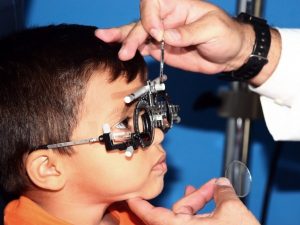The role of the internet, the future of research, and the importance of prevention in the opinions of practitioners.
Based on the published data from theInternational Council of Ophthalmology It is estimated that there are around 200,000 practising ophthalmologists in the world who look after a population of 7 billion people: there is therefore little doubt as to the importance of Ophthalmology as a branch of Medicine!
But what do ophthalmologists really think? In this respect, the findings of a survey sponsored in November 2017 by the prestigious Wills Eye Hospital in Philadelphia, in partnership with Ocular Surgery News, and aimed at exploring current needs and future trends based on the opinions of practitioners themselves.
 The sample that responded to the survey was predominantly made up of hospital workers and freelancers, with academics following at some distance.
The sample that responded to the survey was predominantly made up of hospital workers and freelancers, with academics following at some distance.
According to the respondents, the majority of their patients still do not systematically make use of screening and other preventive measures, but only visit the ophthalmologist when a specific eye problem occurs.
Half of the respondents identified some proactivity in their patients with regard to potentially available preventive measures and in 10% even intense proactivity, while 33.9% excluded any proactive attitude.
Particularly interesting are the answers concerning the sources of information that patients draw on today: in first place is word of mouth, followed by the general practitioner and in third place internet. Patients who acquire information from the Internet are on average better informed in almost 60% of the sample.
With regard to the factors that guide the choice of a specialised centre to which to refer a patient, in first place is the recognised clinical expertisesecond the success rate in treating individual patients, followed by the complexity of the case to be managed, the degree of technological advancement, and so on. Regarding the areas that will experience the greatest development in the next five years, among innovative ophthalmic therapies in first place is the genetics applied to clinical practice, followed by advances in imaging technologies and in the treatment of macular degeneration. Only later come robotics applied to eye surgery and the role of artificial intelligence. As far as telemedicine is concerned, few ophthalmologists use it systematically yet, but all foresee its growing role in the years to come.
Finally, all respondents would like research efforts in the near future to be equally distributed between prevention progress and therapy development.
For further information, please consult the complete data of the survey Wills Eye.
Dr. Carmelo Chines
Direttore responsabile
